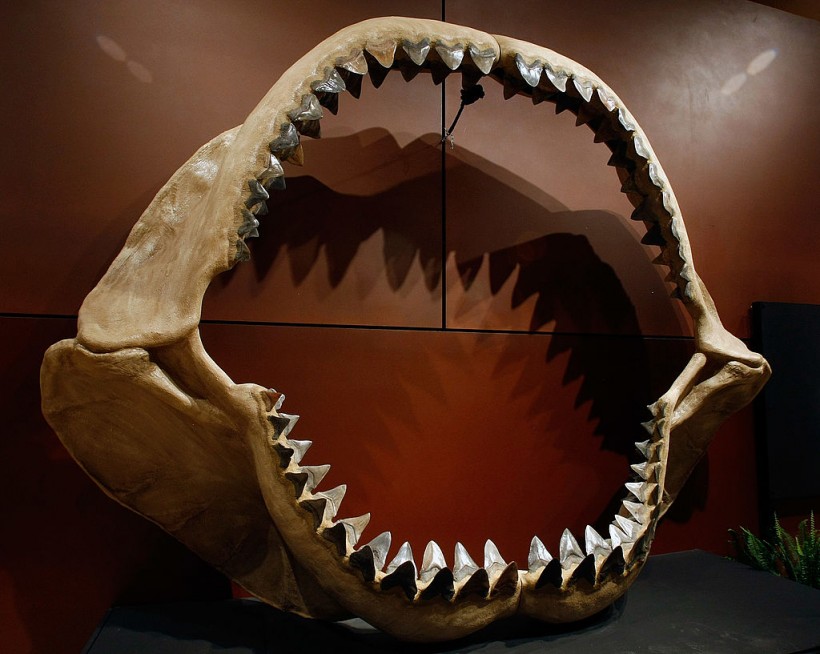Mosasaurs were fearsome marine reptiles that ruled the ancient seas during the age of dinosaurs.
But how did they evolve from land-dwelling lizards to ocean-dwelling predators?
A new fossil discovery from Japan may provide some clues.
What is a Mosasaur?
 (Photo : Ethan Miller/Getty Images)
(Photo : Ethan Miller/Getty Images)

Mosasaurs are a group of extinct marine reptiles that lived during the Late Cretaceous period, about 98 to 66 million years ago.
They are closely related to modern lizards and snakes and evolved from terrestrial ancestors into fully aquatic predators.
They had long, streamlined bodies, paddle-like limbs, powerful jaws, and tail fins. They ranged in size from 3 to 13 meters in length and preyed on fish, mollusks, turtles, and other marine animals.
Mosasaurs are classified into several subfamilies, based on their morphology and phylogeny. One of these subfamilies is the Mosasaurinae, which includes some of the largest and most derived mosasaurs, such as Mosasaurus and Prognathodon.
Mosasaurines are characterized by having 14 or more teeth in the upper and lower jaws, a rectangular-shaped quadrate bone, and a long and slender tail.
Some mosasaurines also developed specialized adaptations for crushing hard-shelled prey, such as Carinodens and Globidens.
How Did the New Species Diversify?
A new species of mosasaurine, named Jormungandr walhallaensis, was recently discovered in the Pembina Member of the Pierre Shale Formation in North Dakota, USA.
The fossil consists of a partial skull and skeleton and dates back to about 80 million years ago3. The new species is named after Jormungandr, the mythical sea serpent that encircles the world in Norse mythology, and Walhalla, the town near where the fossil was found.
Jormungandr walhallaensis is a medium-sized mosasaur, estimated to be about 6 meters in length. It has a unique combination of features that are seen in both basal and derived mosasaurines, as well as some that are exclusive to itself.
For example, it has a high number of teeth, similar to Clidastes, a basal mosasaurine, but also a rectangular quadrate, similar to Mosasaurus, a derived mosasaurine.
It also has a distinctive shape of the surangular bone, which forms part of the lower jaw, and a reduced number of presacral vertebrae, which are the vertebrae before the sacrum.
The researchers who described the new species performed a phylogenetic analysis, using a dataset of 64 characters and 33 mosasaur taxa, to determine the evolutionary relationships of Jormungandr walhallaensis.
They found that the new species forms a polytomy, or an unresolved branch, with Clidastes, meaning that it is not clear which one is more closely related to the other mosasaurines.
However, they suggested that Jormungandr walhallaensis may represent a transitional form between Clidastes and the more derived mosasaurines, such as Plotosaurus and Mosasaurus.
The discovery of Jormungandr walhallaensis adds to the diversity and complexity of the mosasaurine subfamily and reveals that there were more variations in the postcranial skeleton, or the skeleton behind the skull than previously thought.
The new species also shows that the evolution of aquatic adaptations in mosasaurs was not a simple linear process, but involved multiple changes and reversals along different lineages.
The researchers hope that future studies will uncover more fossils and characters that will help resolve the phylogeny and biogeography of the mosasaurines, and shed more light on the evolution of these fascinating marine reptiles.
Related article: Widespread Microplastics Harm Aquatic Species in Rivers in Mediterranean Sea and Atlantic Ocean, Report Warns
© 2024 NatureWorldNews.com All rights reserved. Do not reproduce without permission.




![Roundworms with Short Memories 'Stop Forgetting' When Frozen or Given Lithium [Study]](https://1471793142.rsc.cdn77.org/data/thumbs/full/70295/280/157/50/40/roundworms-with-short-memories-stop-forgetting-when-frozen-or-given-lithium-study.jpg)
